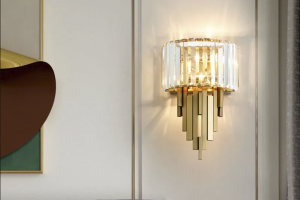Introduction
Lava lamps have been a popular decorative item for many generations. They have an enchanting, hypnotic, and soothing movement that can take a person into a trance-like state. A lava lamp is more than just a piece of décor; it is a conversation piece, a mood enhancer, and a unique item for those who appreciate elegance and style. This article will explore the origins of the lava lamp, its structure, and the scientific principles that make it work.
Origins of the Lava Lamp
The lava lamp was invented by a British entrepreneur named Edward Craven Walker in 1963. He was inspired by an odd-looking egg timer he had seen in a pub that used a light bulb to heat a mixture of oil and water that would rise and fall in a mesmerizing manner. He thought it would be a great idea to create a lamp that operated on the same basic principles. He called his invention the “Astro Lamp” and introduced it to the market in 1965. The Astro Lamp quickly became a cult favorite with college students and soon became a symbol of the psychedelic era.
Structure of the Lava Lamp
The basic structure of a lava lamp is straightforward. It consists of a glass vessel filled with a clear or colored liquid, in which an organic compound is suspended. This organic compound, commonly referred to as “lava,” is usually made up of wax or oil. The vessel is mounted on a base that contains a bulb that provides heat to the liquid. The heat source melts the wax or oil, causing it to rise to the top of the vessel in a globular shape. As it cools, the lava falls back down to the bottom of the vessel, creating a mesmerizing, almost hypnotic movement.
The Science Behind the Movement of the Lava Lamp
The movement of a lava lamp is a result of two scientific principles: density and convection. The organic compound in the lava lamp is less dense than the liquid in which it is suspended. As the bulb heats the liquid in the bottom of the vessel, the liquid expands, and its density decreases. The less dense liquid rises to the top of the vessel, taking the suspended lava with it. As it moves away from the heat source, it cools and becomes denser, causing it to fall back down to the bottom of the vessel. This circular motion creates the mesmerizing movement of the lava lamp.
The Lava Lamp as a Decorative Item
The mesmerizing movement of the lava lamp has made it a popular decorative item since its introduction to the market in the 1960s. It has been featured in many movies an




More Posts
Stunning Vintage Opaline Lights: Illuminating Homes with Timeless Elegance
Bringing Versatility to Light: Exploring the Benefits of Dual Light Technology
Shining Light on E14 Bulbs: The Ultimate Guide to Understanding and Using Them